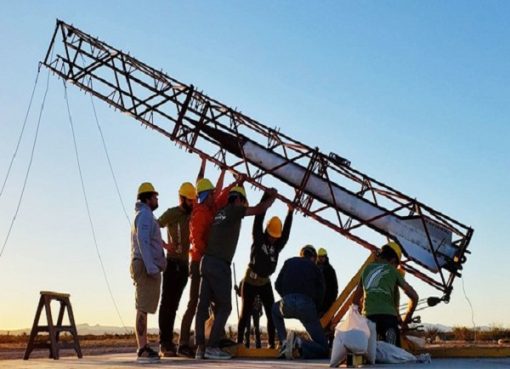MIT researchers have been able to print vaccine-filled microneedle patches that can be stored long-term at room temperatures.
This technology would solve many of the challenges of increasing global access to vaccinations: mainly the need for infrastructure that can maintain the doses at under-zero temperatures, as well as syringes, needles, and trained healthcare professionals to administer them.
In contrast, the machine built by the MIT team can print patches with hundreds of microneedles containing vaccines. The patch can be attached to the skin, allowing the vaccine to dissolve without the need for a traditional injection. Once printed, the vaccine patches can be stored for months at room temperature.
This kind of printer, which can fit on a tabletop, could be deployed anywhere vaccines are needed, such as remote villages, refugee camps, or military bases to enable rapid vaccination of large numbers of people.
“We could someday have on-demand vaccine production,” said Ana Jaklenec, a research scientist at MIT’s Koch Institute for Integrative Cancer Research. “If, for example, there was an Ebola outbreak in a particular region, one could ship a few of these printers there and vaccinate the people in that location.”

Inside the printer, a robotic arm injects ink into microneedle moulds, and a vacuum chamber below the mould sucks the ink down to the bottom. Pictured is an example of the mould./ MIT
The MIT team began researching this technology before Covid-19, with a view towards developing a device that could quickly produce and deploy vaccines during outbreaks of diseases such as Ebola.
Instead of producing traditional injectable vaccines, the researchers decided to work with a novel type of vaccine delivery based on patches about the size of a thumbnail, which contain hundreds of microneedles. These types of vaccines are currently in development for many diseases, including polio, measles, and rubella. When the patch is applied to the skin, the tips of the needles dissolve under the skin, releasing the vaccine.
“When Covid-19 started, concerns about vaccine stability and vaccine access motivated us to try to incorporate RNA vaccines into microneedle patches,” said postdoc John Daristotle.
The researchers found that a 50/50 combination of polyvinylpyrrolidone and polyvinyl alcohol, both of which are commonly used to form microneedles, had the best combination of stiffness and stability.
Inside the printer, a robotic arm injects ink into microneedle moulds, and a vacuum chamber below the mould sucks the ink down to the bottom, making sure that ink reaches all the way to the tips of the needles.
To test the printer, the researchers used it to produce a Covid-19 microneedle vaccine. They then vaccinated mice with two doses of the vaccine, four weeks apart, and then measured their antibody response to the virus.
The results showed that mice vaccinated with the microneedle patch had a similar response to mice vaccinated with a traditional, injected RNA vaccine. The researchers also saw the same strong antibody response when they vaccinated mice with microneedle patches that had been stored at room temperature for up to three months.
“This work is particularly exciting as it realizes the ability to produce vaccines on demand,” said Joseph DeSimone, a professor of translational medicine and chemical engineering at Stanford University, who was not involved in the research. “With the possibility of scaling up vaccine manufacturing and improved stability at higher temperatures, mobile vaccine printers can facilitate widespread access to RNA vaccines.”
While the study was focused on Covid-19 RNA vaccines, the researchers plan to adapt the process to produce other types of vaccines, including vaccines made from proteins or inactivated viruses, the team said.
The current prototype can produce 100 patches in 48 hours, but the researchers anticipate that future versions could be designed to have higher capacity.
Source: E&T










